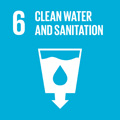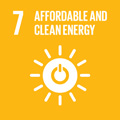- Docente: Nicodemo Di Pasquale
- Credits: 10
- SSD: ING-IND/25
- Language: Italian
- Teaching Mode: Traditional lectures
- Campus: Ravenna
- Corso: First cycle degree programme (L) in Chemistry and Technologies for the Environment and Materials (cod. 8515)
-
from Sep 19, 2024 to Dec 20, 2024
Learning outcomes
The purpose of this course is to present and discuss elementary tools for the understanding of the performance of equipment and plants in the chemical and process industry. The first goal is to provide the students with basic tools for the study of selected apparatus and operations and for making quantitative previsions about the performance of separation processes and chemical reactors; an additional goal is to discuss the main features of typical equipment of the chemical industry.
Course contents
Prerequisites
-
Elementary functions: powers, roots, exponentials, and logarithms. Solution of algebraic equations. Basic knowledge of differential and integral calculus for functions of a real variable. (Educational activity: Mathematics with exercises)
-
Knowledge of the main physical quantities and the relationships between them, main units of measurement. Mechanics of the material point and systems. (Educational activity: Physics with exercises)
-
Chemical reactions and their balancing. The ideal gas law - The meaning of pressure and temperature of a gas - Gas mixtures - Partial pressures - Dalton's law. (Educational activity: General and Inorganic Chemistry with Laboratory)
-
Knowledge of Thermodynamics applicable to chemical systems under equilibrium conditions. Phase equilibria in single-component and multi-component systems. The ideal gas law. Mole fraction and partial pressure. The first law of thermodynamics. Physical transformations of pure substances. Simple mixtures. (Educational activity: Physical Chemistry)
Part I
Integral balances of matter and energy applied to apparatus and plants.
Schemes of apparatus in the chemical and process industry: equilibrium stage model, degrees of freedom, design and verification problems, simple fluid dynamic models (perfect mixer, piston flow).
Fluid motion: flow regimes in conduits, generalized Bernoulli equation, head losses; pumps (overview); overview of Stokes' law.
Separation processes: principles and main applications of these operations, operating methods, design elements, overview of verification problems related to the following unit operations: integral distillation, humidification, and drying operations.
Part II
Heat transfer: conduction; convection, phase and overall coefficients, logarithmic mean temperature difference; heat exchangers.
Interfacial mass transfer by convection: phase and overall coefficients, logarithmic mean driving force. Stage operations and overview of continuous contact operations. Equilibrium stage efficiency.
Separation processes: principles and main applications of these operations, operating methods, design elements, overview of verification problems related to the following unit operations: absorption and stripping (tray and packed columns).
Part III
Chemical reactors: main types of reactors; ideal isothermal reactors (batch, CSTR, PFR) and performance comparison; design criteria and verification problems; yield and selectivity issues.
Separation processes: principles and main applications of these operations, operating methods, design elements, overview of verification problems related to the following unit operations: concentration; adsorption.
Readings/Bibliography
The teaching material will be made available on Virtuale.
Additionally, the following textbooks are suggested for further study of various parts of the program, but they are neither adopted nor followed in detail:
- W.L. McCabe, J.C. Smith, P. Harriott, Unit Operations of Chemical Engineering, 5^ ed., McGraw-Hill, 1993.
· R.M. Felder, R.W. Rousseau, Elementary Principles of Chemical Processes, 3^ ed., Wiley, 2000.
· W.L. McCabe, J.C. Smith, P. Harriott, Unit Operations of Chemical Engineering, 5^ ed., McGraw-Hill, 1993.
· V. Petrone, E. Fioco, L'Impianto Chimico, Ed. Scient. Siderea, Roma, 2000.
· T. M. Ducan , J.A. Reimer, Chemical Engineering Design and Analysis, 2^ ed., Cambridge University press, 2019.
Teaching methods
Lectures and exercises in the classroom, according to the official schedule.
During the lectures, the aforementioned topics are presented and discussed; this theoretical moment is accompanied by exercises.
During the exercises, in order to help students acquire the ability to perform simple calculations, exercises are conducted in the classroom. During this activity, the teacher adjusts the difficulty of the problems and clarifies any doubts.
Assessment methods
The final exam aims to verify the achievement of the following educational objectives:
- Ability to use the analysis and calculation tools covered in the lectures and exercises to understand the operation of apparatuses and the principles on which their design is based, including the chemical/physical phenomena occurring in process plants and equipment;
- Ability to use the obtained results to improve the operation of process plants and equipment.
The assessment of learning takes place through a final exam to be taken after the course ends. The final exam consists of a written test and an oral test. The written test is unstructured and aims at solving problems and exercises. The oral part, also unstructured, focuses on the setup and discussion of problems intended to apply the acquired tools for the analysis of transport phenomena related to heat, mass, and momentum transfer in process equipment. Additionally, the student is required to verify specific hypotheses and interpret the obtained results.
Both the written and oral tests contribute to the final grade. The final grade will be within a range of plus or minus three points from the grade obtained in the written test.
The written test has a total duration of 3 hours, during which the use of books, notes, and calculators is allowed. The test is voided if the student is caught copying or using network-connected electronic devices (e.g., cell phones, tablets, ebook readers, notebooks, etc.).
To take the written exam, registration through "Alma Esami" is required, adhering strictly to the set deadlines. Those who cannot register by the due date must promptly communicate the issue (and in any case before the official closing of the registration lists) to the responsible teacher. The teacher has the discretion to admit or not admit the student to take the exam. The recording of the achieved grade takes place on the scheduled date for the oral exam
Teaching tools
The teaching material useful for exam preparation (outlines, diagrams, sheets, and exercise texts) is made available to the student in electronic format through the Virtuale platform.
Office hours
See the website of Nicodemo Di Pasquale
SDGs




This teaching activity contributes to the achievement of the Sustainable Development Goals of the UN 2030 Agenda.
